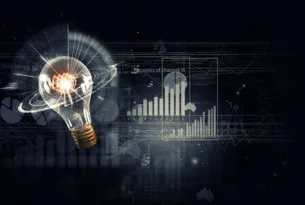It has now become the bullet train wreck with a bullet.
The July 23 collision of two bullet trains on the Beijing-to-Shanghai line killed at least 40 people. That’s disaster enough.
But the wreck has turned into a huge setback in China’s drive to become an exporter of complex technology products. It has raised major doubts about China’s ability to innovate, and exposed connections between official corruption and the questionable safety of China’s technology.
The wreck couldn’t have come at a worse time in China’s campaign to be seen as a technology innovator and not just a technology imitator.
The country had filed for more than a dozen international patents for its high-speed train technology. The European and Japanese companies that had joint-ventured with China when the country began building its high-speed rail network cried foul. China had simply slapped some new paint on their technology, they said.
Not so, China countered, our high-speed trains are based on major Chinese innovations. And as proof, China pointed to the increased speed of its trains. Instead of the 200 kilometers-per-hour (124 mph) top speeds of the European and Japanese trains, China’s trains could run at speeds of up to 300 kph.
Nonsense, European and Japanese manufacturers countered. China had just taken existing technology and increased the speed of its trains by cutting safety.
The wreck on the Beijing to Shanghai line certainly gives weight to those European and Japanese claims. But the continuing investigation into the causes of the wreck is turning up even more troubling questions about whether China’s economic system and its flagship companies can deliver world-class technology.
On August 9, for example, train maker China CNR said it had suspended production of one bullet-train model to address technical glitches in the automatic protection system that’s supposed to alert a train and its operators to problems.
Glitches? Not when a wreck resulted when a train slammed into the rear of a stopped train.
In a filing with China’s security regulators, the company said it had reported the problem to the Ministry of Railways. That certainly suggests that the company discovered and reported the problem itself.
But 21st Century Business Herald is reporting that the company had been ordered to improve the train by the ministry. And ministry sources are saying that China CNR was responsible for 19 of the 20 train-related malfunctions on the line since it opened in June.
And then there’s the problem with the axles. A July 15 inspection in Jinan, in Shandong province, discovered a 7 millimeter by 2.4 millimeter crack in a train axle.
The axle was switched out and that train—and a train of a similar model from the same supplier—continued to operate at speeds of up to 300 kilometers an hour on the Beijing to Shanghai line.
Now, as the investigation into the accident has found, the July 15 inspection wasn’t the first indication of axle problems. Equipment supplier Beijing Sheening reported similar defects in June.
Technicians at the Ministry of Railways have told investigators, Caixan reports, that their testing found similar problems in other axles. Three of them were scrapped and four others swapped out.
The treatment of the axle problem would seem to violate Ministry of Railways standards that require any power shaft with a crack of two millimeters of more to be scrapped.
A total of 54 trains were recalled by China CNR on August 11. The company listed the reason for the recall as “sensor false positives.” At this point, it’s not clear if anything is being done about the axle problems.
But it’s the connection between these equipment problems and corruption that may ultimately be most damaging to China’s technology strategy.
The wheels for the CRH380BL models of high-speed trains were supplied by Zhibo Lucchini Railway Equipment, a company formerly headed by Ding Shumiao. Ding currently faces bribery charges in the corruption case of former Minister of Railways Liu Zhijun.
A four-year old joint venture, Zhibo Lucchini had secured contracts to manufacture more than 60% of the wheel sets for China’s high-speed trains.
Domestically, the impact of all of this will be to undermine customer confidence in a high-speed rail network already facing financial problems due to high ticket prices and huge cost overruns. Internationally, the effect will be to cut the market for Chinese high-speed train equipment—and to require the government to offer even more favorable financing to customers.
But the effects won’t be limited to that one technology. China’s wind-turbine industry, for example, was already facing questions about the reliability of its equipment, and the country’s telecommunications-equipment makers have been facing an uphill battle to increase sales outside of China.
Different companies and different technologies. But you can be sure potential customers are asking, "If I wouldn’t buy a high-speed train from China, why would I buy…."
Full disclosure: I don’t own shares of any of the companies mentioned in this post in my personal portfolio. The mutual fund I manage, Jubak Global Equity Fund, may or may not now own positions in any stock mentioned in this post. For a full list of the stocks in the fund as of the end of June, see the fund’s portfolio here.






































